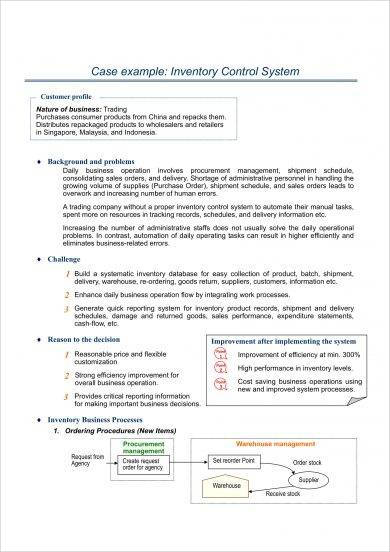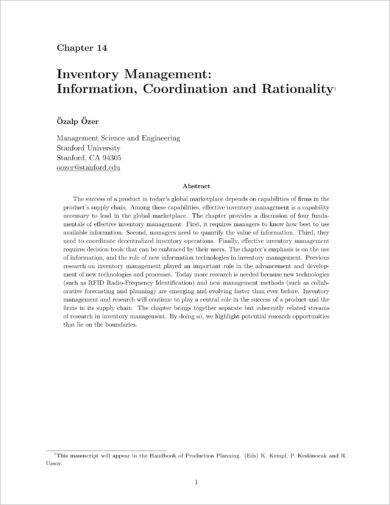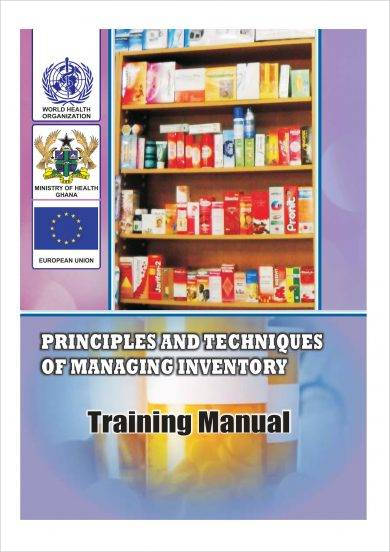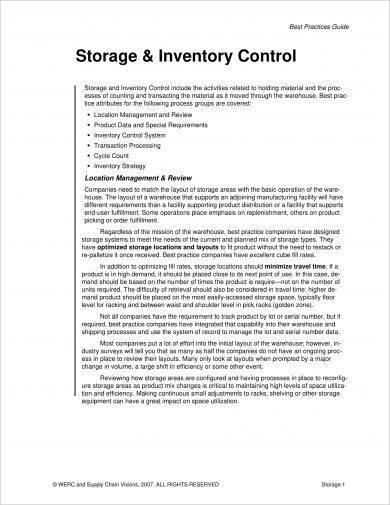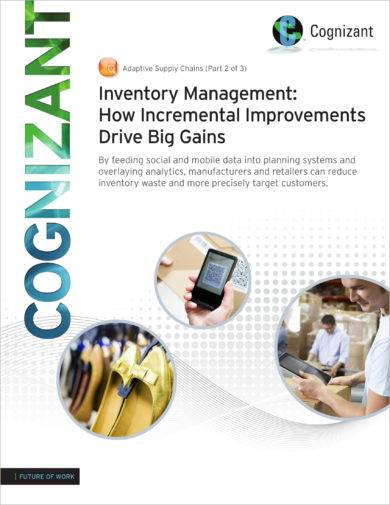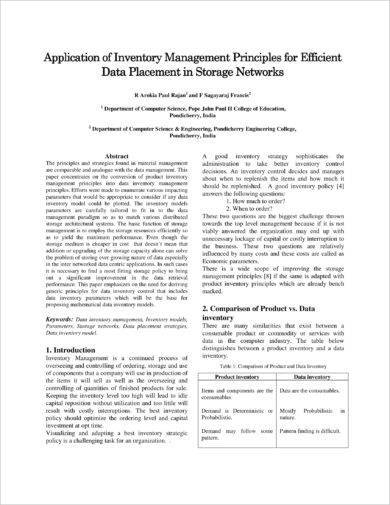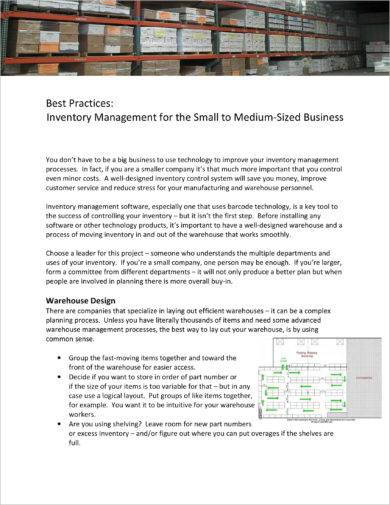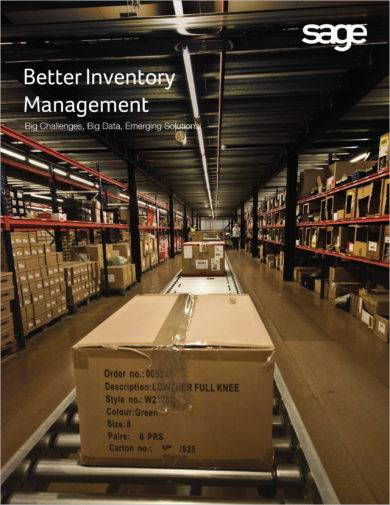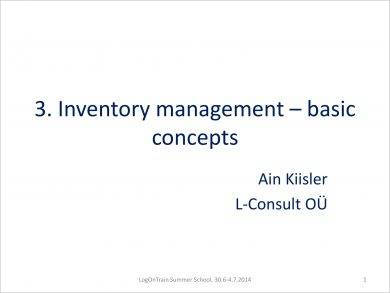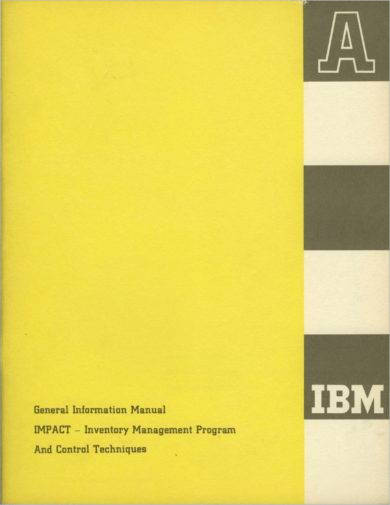11+ Inventory Tracking and Management Examples to Download
Aside from relying to systems like the inventory database examples used by the organization or business where you are currently involved in, there are still different inventory tracking processes and inventory management protocols that you can refer to and incorporate in your business processes so you can ensure that your inventory is well-maintained, properly looked into, and updated.
A business may still function even without the usage of inventory systems and documents. However, businesses like these are most likely to be disorganized and out of focus when maintaining, managing, tracking, and controlling its inventory stock. This is one of the main reasons why it is essential for your business to come up with an inventory management plan and other necessary documents relevant and related to the specified matter.
A list of downloadable general inventory tracking and management examples in PDF are available for you to browse through in this post. Make the most out of using these examples as your references so it will be faster, easier, and more efficient for you to draft and finalize the inventory tracking and management documents that you need.
Inventory Policy and Procedure for Tracking and Management Example
Inventory Management Example
Inventory Control System Example
Inventory Management: Information, Coordination and Rationality Example
Things to Be Mindful of When Implementing Inventory Tracking and Management Procedures
May it be equipment inventory examples or goods inventories that you are developing, it is important for you to ensure the completion of all the information that are expected to be seen by concerned stakeholders in the document. If you will create a comprehensive inventory tracking and management document, it will be easier to set the direction of inventory maintenance.
Moreover, it will also be faster for you to provide instructions on how involved entities can execute obligations and provide their deliverable. A few of the things that you always have to be aware of when developing and implementing inventory tracking and management procedures include the following:
1. You have to ensure that the inventory tracking and management procedures that you will develop are based on the needs and demands of your business’s actual inventory. It is important for your inventory tracking and management regulations and protocols to be fit with the nature of your business operations and the easiest way on how you can maintain a sustainable inventory process. You may also see system inventory examples.
This will allow you to ensure that quality standards will always be incorporated in the inventory-related undertakings and plans that you will come up with.
2. Know the ability of your business to manage its inventory listing. Look into the skills and expertise of your people, the range of your operations, the demands that you need to supply, and the activities that are needed to be implemented for your inventory processes to be a success. You may also like accounting inventory examples.
Knowing how you will maximize the resources of the business can give you access to the development of the best inventory management procedures and guidelines.
3. Do not just focus on the internal factors that you need to consider. Inventory does not only rely on your business operations alone. You should also think of the external factors and elements that can affect the movement and storage of goods, equipment, materials, and other items that you will use for your business operations and offerings. You may also check out restaurant inventory examples.
One of the things that you need to look into is the needs of your customers. You need to ensure that your supplies in the inventory are enough to provide the current and potential needs of your target audience. This will allow you to manage your inventory in a way that shortage or excesses can be veered away from. You might be interested in food inventory examples.
4. The inventory tracking and management procedures that you will make should discuss different areas of the inventory maintenance and activities that are incorporated in it.
As an example, a basic inventory tracking and management guide should present details about the number of stocks that you still have at hand, the number of items that you need to order and acquire in particular time periods.
The specific dates in which actual number of products are expected to be present in the warehouse or stockroom, the number of equipment and tools that you need to have at hand depending on your operational needs, and the ways on how you can handle circumstances where shortages or excesses took place. You may also see asset inventory examples.
5. Ensure that you will collaborate with your stakeholders especially the people that will be tasked to execute your call-to-actions with regards inventory management. All your strategies, tactics, and action plans must be realistic, manageable, and attainable so you can ensure the effectiveness and potential successes of your inventory management efforts. You may also like store inventory examples.
Training Manual for Principles and Techniques of Managing Inventory Example
Storage and Inventory Control Example
Basic Inventory Management Example
Application of Inventory Management for Data Placement in Storage Networks
How to Properly Manage, Track, and Control Your Business’s Inventory
Developing processes for inventory management, tracking, and control is a tedious and hard task that you have to thoroughly look into so you can make the best decisions for your business.
Even if there are challenges that you may face within the processes of planning what system to use and what management strategies to incorporate in your inventory management, all of these hardships will be worth it as you can easily supply your inventory needs once you already have the documents and systems that you aspire to have and make use of. You may also see blank inventory examples.
Here are the basic steps that you may follow if you want to effectively and efficiently manage, track, and control the inventory of your business:
1. Asses the inventory that you currently have, if there is any.
This will help you understand the existing condition of the inventory that you have and the things that you can still further improve for the development of the operations of your business and the execution of your inventory processes and procedures. It is essential for you to understand why there is a need for an inventory control system to be developed and this can only be achieved if you are fully aware of the current state of the simple inventory of your business.
2. Know what inventory management software will work best for your business. Think of an inventory management software as a corporate investment.
Gone were the days that the only option for inventory tracking and management is doing these processes manually. If you have a good inventory management software, then it will be faster and easier for you to track, update, and control your inventory. When selecting the software to use, do not just rely on the inventory examples that are used by other businesses. Be reminded that each business has different inventory needs, which is why you have to focus on the requirements of your business.
You can seek professional help from experts who are aware of what inventory management software works best in every circumstances, inventory scope and range, and/or business operation demands.
3. Organization must always be incorporated in your sample inventory processes. Ensure that your workforce or the entities who are considered as the point persons for inventory management will come up with clear labels and specific item placements. This will allow tracking procedures easier especially if you have a wide range of inventory processes and stock safe keeping.
4. Always count your inventory stock from time to time. It is important for you to make sure that the actual inventory stock is the same with what is recorded in your inventory system. There are instances where manual counting and tracking may still be necessary. Base your tracking and maintenance processes on the current state of your inventory stock and the actual issue that you need to face. You may also like skills inventory examples.
5. Update your inventory and ensure that you will keep your updated documents or forms in a well-arranged manner. You need to have a system of bookkeeping that will help you to put together all the inventory updates in an organized manner. Doing this can help you maintain the right level of inventory for your business operations. You may also check out process inventory examples.
6. Once you have already used the inventory systems and other functions associated with it for a particular time period, assess the results and impacts that it has brought to your business.
Knowing the level of effectiveness of your inventory management and tracking systems will allow you to maintain those functions that worked and change those that are only negating the achievement of your objectives, goals, and overall inventory vision. You might be interested in school inventory examples.
Inventory Management for the Small to Medium-Sized Business Example
Better Inventory Management Example
Basic Concepts of Inventory Management Example
Inventory Management Program and Control Techniques Example
Tips in Drafting Your Own Inventory Tracking, Management, and Control Documents
Tracking, managing, and controlling the inventory of your business requires the collaboration of different entities as well as the incorporation of different processes and activities within the entire inventory life cycle. With this, you have to be fully aware of the needs and deliverable of your business as well as the demands and expectations of your customers. You may also see data inventory examples.
Here are some useful tips that you can refer to if you want to start drafting the inventory tracking, management, and control documents of your business:
1. Do not overlook any original data. Your inventory management and tracking system must have a feature that will allow you to detect all the updates or changes that have been made in the inventory. With this, you can track if there are any discrepancies or inaccurate information that may occur in the future. You may also like landlord inventory examples.
2. Ensure that your inventory is always updated. You need to have a real-time tracking of your stocks based on the content of your inventory systems. Being able to develop an inventory management process that works this way can help you easily come up with the decisions that you need to execute based on your inventory conditions. You may also check out property inventory examples.
3. Your standard inventory system should present a plan or a process that can provide you the best recommendations on what to do for your inventory. There should be specifications of the dates where there is already a need to order new stocks as well as the description of the stocks that are essential to be acquired together with the amount or number that the business must order per item.
4. In comparison to the development of a small business investment agreement, you also have to be specific and concise when presenting the content of your inventory management, tracking, and control documents. It is important for you to know the condition of your inventory, the gap that you need to bridge for process development, the systems that you will use for inventory management, and the factors that you have to consider for the effective execution of your inventory-related plan of actions.
5. Always look into the effectiveness and efficiency of the systems and processes that you are using and implementing. You always have to look into the development opportunities that you can grab and incorporate in your operations so that you can maximize all your resources while potentially lowering or maintaining the cost of inventory processes. You might be interested in classroom inventory examples.
If you need any documents or materials for the purpose of basic inventory tracking, management, and control, feel free to browse through and download the examples in PDF that we have put together in this post. You can also look into the discussion above as well so that you can be guided accordingly when it comes to the development of the actual inventory document that you need.



